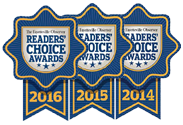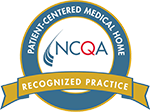Understanding Pediatric Headaches, Their Treatment and When to Seek Help
Having a headache, regardless of age, can be distracting and quite painful. Often they are caused by things like dehydration, allergies, sleep issues, too much screen time, or stress. However, just like adults, some kids are prone to frequent headaches or headaches that last a long time.
 Headaches are a common concern for adults. However, approximately 20% of children are also prone to headaches. Migraines occur in 5% of children and the remaining 15% experience tension headaches. In most cases, the prevalence of headaches grows as the child ages. Chronic pediatric headaches can be defined as those that occur several times per week.
Headaches are a common concern for adults. However, approximately 20% of children are also prone to headaches. Migraines occur in 5% of children and the remaining 15% experience tension headaches. In most cases, the prevalence of headaches grows as the child ages. Chronic pediatric headaches can be defined as those that occur several times per week.
Tension Headaches
Tension headaches are the most common type of headaches that children experience. These occur when tension builds in the head or neck muscles, causing them to squeeze. This creates a dull, throbbing tension that can often be felt in the front or back of the head or the temples.
Migraine Headaches
About five percent of children who have chronic headaches are diagnosed with migraines, which are caused by changes in blood flow across the brain. The brain itself cannot feel pain, so the pain associated with migraines comes from other structures in the head that hurt. While migraines often occur on one side of the head in adults, they can occur on both sides in kids. Also, they are often accompanied by nausea and light sensitivity and, in children, can last anywhere from an hour to a day. Before puberty, migraines are most common in boys. However, after puberty, they are twice as common in girls. Approximately 15 percent of children experience an aura (flashing lights, blind spots or tingling extremities) with a migraine.
Headache Treatment for Kids
The best treatment for a headache is rest. Taking a nap or just resting in a quiet and dark room is the most effective way to stop a headache. If the pain persists or is unbearable, over the counter medication such as acetaminophen or ibuprofen can be offered to the child. If these medications are not effective, schedule an appointment with the child’s pediatrician.
When to See a Doctor
If a child who normally has occasional headaches begins having several headaches a week, it is recommended they see a pediatrician for an evaluation. It is also recommended that they are seen if their headaches are accompanied by a fever, changes in vision, a rash, tingling sensations, dizziness or neck pain/stiffness. Before arriving for an evaluation, it is essential for parents to keep track of the child’s headache frequency and severity. Keeping a diary of their diet and any possible triggers for each episode are also helpful. Depending on the exam findings, they may be referred to a pediatric neurologist for further testing.
Headaches can be scary, especially when they frequently occur in kids. Identifying and then eliminating the headache cause or trigger will allow kids to live a more pain-free existence. If pediatric headaches are a concern for your family, schedule an appointment with their pediatric provider today.
More information on pediatric headaches and headache testing in kids can be found here: https://www.mayoclinic.org/diseases-conditions/headaches-in-children/diagnosis-treatment/drc-20352104 and here: https://headaches.org/resources/childrens-headache-disorders/








